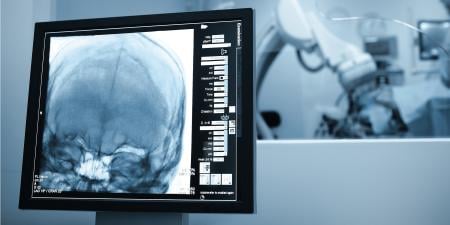Neurosurgery is among the newest of surgical disciplines, appearing in its modern incarnation at the dawn of the twentieth century with the work of Harvey Cushing and his contemporaries. It is also the most fraught. Neurosurgeons alone have the training and education to operate on the organ that constitutes the locus of humankind’s consciousness, emotion, and intelligence. The ethical dilemmas inherent in acting upon the nervous system have long been apparent within our community and are compounded by the moral questions common to all medical fields [1, 2]. Ultimately, neurosurgical ethics involves the challenges of manipulating the anatomical locus of human identity and the concerns of surgeons and patients who find themselves bound together in that venture.
In recent years, neurosurgery ethics has taken on greater relevance as changes in society and technology have brought novel questions into sharp focus. The former changes—a global movement toward patient-centered surgery, evidence-based medicine, and cost-effective care—have prompted us to reconsider the relationship between neurosurgery and societal aims. The latter changes—an expanded armamentarium of techniques for interfacing with the human brain and spine—demand that we use philosophical reasoning to assess the merits of technical innovations.
This issue of Virtual Mentor features an array of perspectives from remarkable people working at the intersection of neurosurgery and practical ethics. Rather than a scholarly exercise, we have sought to create a living showcase of the most important ethical issues in neurosurgery circa 2015. Our goal is to provide useful guideposts for the practicing neurosurgeon as well as to inspire the coming generation of neurosurgeons and neuro-ethicists.
Our case studies, inspired by actual events, highlight key dilemmas that neurosurgeons may face in the clinical environment. The first case commentary, written by Michael Kelly, MD, MA, uses the example of elective cerebral aneurysm surgery to analyze the challenges of risk perception in the informed consent process. In the second case commentary, Bryn Esplin, JD, Andre G. Machado, MD, PhD, Paul Ford, PhD, and Kara Beasley, DO, MBe, take up the process of patient selection for neuromodulation, concluding that a blind attachment to “least invasive” treatments may not actually minimize harm.
Taken as a whole, the neurosurgery community might be placed near the left-hand portion of Everett Rogers’s famous innovation adoption curve [3], as an unambiguous “early adopter.” Perhaps owing to the treacherousness of operating on the human brain and spine, considered unassailable domains for most of medical history, neurosurgeons have, since the mid-twentieth century, adopted new technological ideas—including intracranial pressure monitoring, stereotaxis, microscopy, radiofrequency energy, lasers, computers, endovascular therapy, neuroimaging, endoscopy, neuromodulation, surgical simulation, and molecular biology—with astonishing rapidity and varying success. In their history of medicine piece, Jayant Menon, MD, MEng, and Daniel J. Riskin, MD, MBA, consider the social and moral questions that accompany surgical innovation. By contrast, Brett E. Youngerman, MD, and Guy M. McKhann II, MD, ask how the increasingly ubiquitous standards of evidence-based medicine, with their emphasis on double-blind, randomized controlled trials can be applied to neurosurgery. In our piece, Marwan Hariz, MD, PhD, and I suggest that those advocating neuromodulation as a cognitive enhancement for normal persons may have been carried too far by exuberance about this technology.
Ethical considerations also arise in the training of neurosurgeons. In response to our third case, which was inspired by the ongoing debate surrounding the justification of resident duty-hour exceptions in neurosurgery, Nathan R. Selden, MD, PhD, and Michael M. Haglund, MD, PhD, offer solutions neurosurgery residency programs can pursue to balance patient care and educational training for residents. In this issue’s medical education article, Brian D. Rothstein, MD, MS, and Warren R. Selman, MD, build on their experience with neurosurgical simulation technology to consider the unresolved questions that may accompany its widespread use in training. In a piece that is especially relevant to trainees and young surgeons, neuro-ethicist John Banja, PhD, argues for the disclosure of the surgeon’s experience level as a risk factor in informed consent for neurosurgery.
For neurosurgeons, both training and practice require constant vigilance, attention to the needs of patients, and the maintenance of one’s skills. In this issue, however, we turn our spotlight to several issues that require the neurosurgeon to assess his or her broader relationship to society. Jonathan Riley, MD, and Jessica Emery contribute a thoughtful review of the 2014 report of the Presidential Commission for the Study of Bioethical Issues concerning how the integration of ethics with neuroscience education and research at all levels will lay an ethical foundation for neuroscience research that may have far-reaching societal implications. While acknowledging the admirable leadership of neurosurgery organizations in expanding global access to neurosurgery care, George M. Ibrahim MD, PhD, and Michael Bernstein, MD, MHSc, discuss possible ethical pitfalls in certain common types of neurosurgery international aid missions. In this month’s medicine and society piece, James Giordano, PhD, MPhil, advocates for a preparatory, rather than a precautionary or post hoc, approach to ethical analysis of neurotechnological advances, embracing innovation and anticipating and mitigating problems rather than trying to prevent use of new technologies in the name of risk reduction.
This issue’s podcast features an interview with Paul Root Wolpe, PhD—whose efforts have played a significant role in establishing neuroethics as a scholarly discipline—about emerging ethical issues affecting the field of neurosurgery. We hope you will enjoy the conversation with Dr. Wolpe as much as we did.
We are pleased to note that this is the first time Virtual Mentor has devoted an issue to the ethical dimensions of neurosurgery. As we continually push the boundaries of current technology and technique in the service of our patients, neurosurgeons have the best view of the accompanying ethical challenges. This month’s issue should provide confidence in our community’s ability to engage those challenges and perhaps a sketch of things to come. We invite you to join us on that journey.
References
-
Ammar A, Bernstein M, eds. Neurosurgical Ethics in Practice: Value-based Medicine. Berlin, Germany: Springer-Verlag; 2014.
-
Awad IA, ed. Philosophy of Neurological Surgery. New York, NY: Thieme Medical Publishers; 1995.
-
Rogers EM. Diffusion of Innovations. 5th ed. New York, NY: Free Press; 2003.



